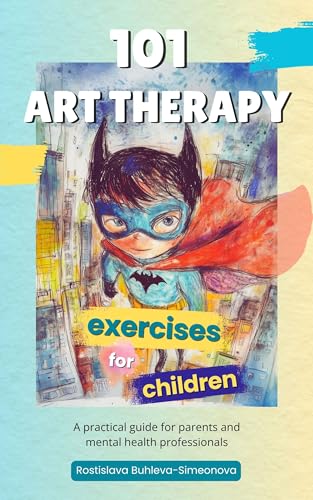Breastfeeding is a transformative journey that transcends mere nutrition, weaving together physical health, emotional intimacy, and profound connection between mother and child. It’s a deeply personal experience, filled with moments of quiet closeness, from the soft rhythm of a baby’s suckling to the warmth of skin-to-skin contact during late-night feedings. Yet, for many mothers, this journey is accompanied by challenges, particularly the pervasive worry of insufficient milk supply, which can stir feelings of doubt and inadequacy. Fortunately, most mothers can produce ample milk with the right strategies, and for those who face barriers to exclusive breastfeeding, mixed feeding—combining breastmilk with formula—offers a practical and effective solution. This article delves deeply into the physiological and psychological benefits of breastfeeding, provides a thorough analysis of evidence-based methods to enhance milk production, and reassures mothers that every ounce of breastmilk, whether alone or alongside formula, is a valuable gift to their baby.

Why Breastfeeding Matters for Your Baby’s Health
Breastmilk is a biological marvel, uniquely tailored to meet an infant’s nutritional, immunological, and developmental needs. It contains a dynamic blend of antibodies, enzymes, and nutrients that adapt to a baby’s changing requirements, offering unmatched protection against a range of health threats. The antibodies in breastmilk, such as immunoglobulin A, form a robust defense against infections like ear infections, respiratory illnesses, and gastrointestinal disorders, significantly reducing the need for medical interventions and hospitalizations (NHS, 2020). Beyond immediate immune support, breastfeeding has far-reaching benefits. It lowers the risk of allergic conditions like eczema and asthma, thanks to bioactive components that modulate the immune system (HealthyChildren.org, 2009). Long-term, breastfed children are less likely to develop obesity, type 1 and type 2 diabetes, and certain leukemias, as breastmilk regulates metabolism and supports healthy growth patterns (Cleveland Clinic, 2023). Emerging research also points to cognitive benefits, with nutrients like DHA (an omega-3 fatty acid) potentially enhancing brain development, leading to higher IQs and better academic performance in later years (PMC, 2018). Additionally, breastfeeding is associated with a reduced risk of Sudden Infant Death Syndrome (SIDS), offering a protective effect during the vulnerable first months of life (NHS, 2020). These benefits are dose-dependent, meaning the longer and more exclusively a baby is breastfed, the greater the health advantages, making breastfeeding a cornerstone of lifelong wellness.
Here I will leave a link to the “Baby Bible”, which I will pay more thorough attention to in a separate review. This is the first thing that I would buy any pregnant woman or new mother as it has saved me on countless occasions in all those “what to do” moments.

Breastfeeding Duration and Child Development: Key Insights
The World Health Organization (WHO) suggests exclusive breastfeeding for the first six months, followed by continued breastfeeding with complementary foods up to two years or beyond, as mutually desired by mother and child. The American Academy of Pediatrics (AAP) aligns with this, recommending exclusive breastfeeding for about six months. Research indicates breastfeeding reduces risks of infections (e.g., ear infections, diarrhea), obesity, and type 1 diabetes, supporting healthy growth. Longer durations may enhance these benefits. Studies suggest breastfeeding is linked to improved cognitive development and reduced odds of developmental delays, potentially due to nutrients and bonding. However, some research finds no consistent cognitive benefits, highlighting ongoing debate. While benefits are widely supported, some studies question the causal link between breastfeeding and cognitive outcomes, citing socioeconomic factors as potential confounders.
The WHO and AAP recommend exclusive breastfeeding for the first six months, meaning only breast milk is given, without water or other foods. After this, complementary foods should be introduced, with breastfeeding continuing up to two years or longer if desired. This minimum of six months ensures infants receive critical nutrients, while the maximum duration depends on personal choice, with no strict upper limit beyond two years. Breastfeeding may enhance cognitive development. CHLA research shows longer breastfeeding correlates with increased brain grey matter, linked to better cognitive performance. An Israeli study of over 570,000 children found those breastfed for six months or more had lower odds of developmental delays. However, some studies suggest socioeconomic factors, not breastfeeding alone, may drive cognitive benefits, fuelling debate.

How Breastfeeding Benefits You
The act of breastfeeding offers profound benefits for mothers, impacting both physical health and emotional well-being in ways that resonate long after the nursing period ends. Postpartum, breastfeeding triggers the release of oxytocin, a hormone that facilitates uterine contractions, helping the uterus return to its pre-pregnancy size and reducing postpartum bleeding, which can accelerate recovery (Cleveland Clinic, 2023). This hormonal mechanism also provides a natural form of contraception, known as the Lactational Amenorrhea Method (LAM), by suppressing ovulation when breastfeeding is exclusive and frequent, though it requires strict adherence and is not foolproof, necessitating consultation with a healthcare provider for reliable birth control (NHS, 2020). Emotionally, breastfeeding fosters a sense of empowerment and fulfillment, as mothers witness their ability to nourish and nurture their child. This process can ease the transition into motherhood, offering a tangible way to connect with the baby while promoting physical recovery and long-term health, making it a deeply rewarding aspect of early parenthood.
Due to the specifics of my nipple shape, I could not breastfeed during the first six months without the help of a nipple shield. They are mostly used for protection, but in my case they aided the process as a whole.
- DESIGNED FOR CONTINUED BREASTFEEDING IN SPECIAL SITUATIONS: Medela’s Contact Nipple Shields are carefully designed to ac…
- UNIQUE SHAPE ALLOWS FOR MORE SKIN-TO-SKIN CONTACT: The innovative cut-out shape of these nipple shields allow for maximi…
- RANGE OF AVAILABLE SIZES TO CHOOSE FROM: Your order contains one 20mm nipple shield; Medela also offers contact nipple s…
If breastfeeding isn’t an option for you—whether due to medical reasons, low supply, or personal choice—you can still create that deep, loving bond with your baby. I know moms who couldn’t breastfeed, and their babies are just as attached and thriving. Holding your baby skin-to-skin, responding to their cries, and spending time cuddling or talking to them can build the same sense of security. A study from the Childhood Development Encyclopedia notes that responsive caregiving, like holding and soothing, fosters attachment just as effectively as breastfeeding (https://www.child-encyclopedia.com/breastfeeding/according-experts/breastfeeding-and-child-psychosocial-development). It’s your love and presence that matter most, not the method of feeding.
- Soothes & Relieves Sore Nipples: Medela’s organic nipple balm provides natural relief to sore nipples and dry skin, than…
- Organic, Vegan & Clean: Made with just four natural ingredients, Medela organic nipple balm is hypoallergenic, dermatolo…
- Versatile & Safe for Baby: This natural balm is baby-safe during breastfeeding and pumping, and also serves as a gentle …
Breastfeeding is a profoundly emotional experience, creating a unique bond that nurtures both the baby’s and mother’s psychological well-being. For the baby, the physical closeness of skin-to-skin contact, the gentle rhythm of suckling, and the warmth of being held during feedings foster a sense of security and trust that forms the bedrock of emotional development (PMC, 2023). These interactions stimulate the release of bonding hormones in the baby, supporting socio-emotional growth and laying the foundation for healthy relationships later in life (HealthyChildren.org, 2009). The consistent presence of the mother during breastfeeding provides a comforting routine, helping babies regulate stress and develop resilience. For mothers, breastfeeding triggers the release of oxytocin, often dubbed the “love hormone,” which promotes relaxation, reduces stress and anxiety, and fosters a deep sense of connection with the baby. This hormonal boost is linked to a lower risk of postpartum depression, as it counteracts stress hormones and enhances maternal mood (PMC, 2023). Beyond biology, the act of breastfeeding can instill a profound sense of accomplishment, as mothers see their baby thrive on their milk, boosting confidence and reinforcing their role as a caregiver. These shared moments—whether in the stillness of the night or amidst the chaos of a busy day—create lasting memories that strengthen the mother-child bond, making breastfeeding a powerful emotional journey.

Easing Worries About Milk Supply
The fear of not producing enough milk is one of the most common concerns among breastfeeding mothers, often amplified by the intangible nature of milk production and the intense desire to provide for their baby. However, research shows that the vast majority of mothers can produce sufficient milk when supported with proper techniques and guidance. Key indicators of adequate milk supply include a baby producing at least six clear or pale yellow wet diapers daily by the fourth day after birth, regular stools that transition from dark green to yellow and seedy by day five, consistent weight gain, and a content demeanor after feedings (University Hospitals, n.d.). If these signs are absent, the issue may stem from factors like an improper latch, which prevents efficient milk transfer, or infrequent feeding, which can signal the body to produce less milk (Pregnancy Birth and Baby, n.d.). Early separation due to medical interventions, such as a cesarean section or neonatal care, can also delay the onset of milk production. These challenges are often temporary and can be addressed with the help of a lactation consultant, who can evaluate latch, positioning, and feeding frequency, offering personalized solutions to optimize milk flow. By understanding these signs and seeking timely support, mothers can transform anxiety into confidence, ensuring their baby is well-nourished and thriving.
There is a myriad of breast pumps that you can choose from. I personally used a hospital-grade Medela double pump. I would strongly recommend using a double to a single pump as it saves you an immense amount of time that you will need to rest or perform your motherly duties. I would also strongly recommend an electrical to a manual option.
- More Milk, More Comfort: Powerful suction in a compact design combined with the anatomically shaped collection cups, fea…
- Ultra-Lightweight: Weighing just 76 g per cup, the Medela Swing Maxi Hands-Free is amongst the lightest breast pumps ava…
- 3 Parts, Easy to Clean: Made up of just 3 individual parts that are dishwasher-safe, easy to remove and assemble—a conve…
Practical Ways to Boost Your Milk Supply
For mothers concerned about milk supply or seeking to maximize production, several evidence-based strategies can effectively stimulate the body’s natural milk-making process. The foundation is frequent breastfeeding—nursing 8 to 12 times in 24 hours, offering both breasts at each session to ensure complete milk removal, which signals the body to produce more (University Hospitals, n.d.). Skin-to-skin contact is another powerful method; holding your baby close, ideally bare-chested, triggers the release of prolactin and oxytocin, hormones critical for milk production (NHS, 2023). If breastfeeding frequency is limited, expressing milk with a high-quality pump—preferably a hospital-grade model or using double pumping—can mimic a baby’s demand and boost supply (Cincinnati Children’s, n.d.). Techniques like gentle breast massage during feedings or power pumping (pumping for 10 minutes, resting for 10, and repeating for an hour) can further stimulate production by replicating a baby’s cluster feeding patterns (Children’s Health, 2020). Maintaining hydration and a balanced diet rich in whole foods supports overall health, which is essential for lactation, though the evidence for specific galactagogues like oats or fenugreek remains inconclusive, so focus on nutrient-dense meals that feel sustainable (Healthline, 2018). Stress can inhibit milk let-down, so creating a calm environment—perhaps with soothing music or a quiet space—can enhance flow. Working with a lactation consultant provides tailored guidance, addressing individual challenges and ensuring long-term success. These methods, rooted in the principle of supply and demand, empower mothers to build and maintain a robust milk supply with patience and persistence. Last but not least, this is not an evidence-based scientific approach, but I have personally observed a notable increase in breastmilk outflow following non-alcoholic beer and coconut water consumption.
Apart from the breastmilk pump, I also used the Medela breastmilk bottle set due to their unique slow-flow silicone nipple design.
- Dishwasher and microwave safe.
- Easy to read volume marks in ounces and milliliters.
- Compatible with all Medela breastpumps to pump, store and feed with one bottle.
Mixed Feeding: A Flexible and Valid Option
While exclusive breastfeeding for the first six months is the gold standard recommended by the World Health Organization, it’s not always feasible, and mixed feeding—combining breastmilk with formula—offers a practical and effective alternative for many families. This approach is ideal for mothers facing low milk supply, returning to work, managing medical conditions, or seeking flexibility to share feeding responsibilities (WIC Breastfeeding Support, n.d.). Importantly, any amount of breastmilk provides critical antibodies and nutrients, making it a valuable contribution to a baby’s health, even when supplemented with formula (La Leche League International, 2018). To maintain milk supply during mixed feeding, continue breastfeeding or pumping 8 to 12 times daily, as reduced demand can signal the body to produce less milk (NHS, 2023). Introducing formula gradually allows the baby to adjust to its different taste and texture, and offering breastmilk first during feedings prioritizes its benefits (Tommy’s, 2019). For practicality, separate breastmilk and formula feedings to avoid wasting breastmilk if the baby doesn’t finish a bottle, though mixing is safe if needed (La Leche League International, 2018). Some babies may initially resist bottles due to the different sucking motion, so patience and experimentation with nipple types may be necessary. Consulting a lactation consultant can help balance breastfeeding and formula, ensuring adequate nutrition while preserving milk production. Mixed feeding empowers mothers to adapt to their unique circumstances, providing a nurturing solution that aligns with their lifestyle and their baby’s needs.
One thing I noticed with my baby was how their weight gain seemed to follow its own rhythm. Breastfed babies often gain weight more slowly than formula-fed babies after the first few months, and that’s totally normal. The World Health Organization says this slower gain is healthy, as breast milk adjusts to your baby’s needs. Formula-fed babies might gain weight faster because formula has a consistent makeup, but that doesn’t mean it’s better. If you’re worried about your baby’s growth, check in with your paediatrician—they’ll track weight gain and make sure everything’s on track.

Wrapping Up
Breastfeeding is a remarkable journey that nourishes a baby’s body with vital nutrients and antibodies while fostering a profound emotional bond through moments of closeness and care. It supports maternal health by aiding postpartum recovery, reducing cancer risks, and enhancing emotional well-being through oxytocin’s calming effects. For mothers worried about milk supply, evidence-based strategies like frequent nursing, skin-to-skin contact, and professional support from lactation consultants can make a significant difference, as most women are capable of producing enough milk with the right approach. For those unable to breastfeed exclusively—whether due to low supply, work, or personal choice—mixed feeding offers a flexible and effective way to provide the benefits of breastmilk alongside formula, ensuring babies thrive. Every drop of breastmilk is a testament to a mother’s dedication, and every feeding choice is valid. By seeking guidance from healthcare providers or lactation experts, mothers can navigate this journey with confidence, knowing they’re giving their baby a strong start, no matter how they choose to feed.
Please note that some of the links provided in this article are affiliate links. This means that I may earn a small commission if you click on these links and make a purchase, at no additional cost to you. These commissions help support the maintenance and creation of content for this blog, allowing me to continue providing helpful resources for new moms like you. I only recommend products or services that I believe in and that align with the goal of supporting your breastfeeding journey. I am also hoping you might consider purchasing my book 101 Art Therapy Exercises for Children: A Practical Guide for Parents and Mental Health Professionals. Thank you for your support!
 Rostislava Buhleva-Simeonova is a psychologist, art therapist, and gamificator. She has worked with children, adults, and the elderly within various therapeutic programmes over the past eight years, all the while providing the much-needed playful twist that art and gamified experiences can bring to this sometimes uneasy setting. But it wasn’t until the birth of her daughter, Aurora, that this work took on an even deeper personal meaning. With her academic and real-life experience, honed through numerous trainings and sessions, she is currently authoring books and articles in the field of child psychology and development, offering expertise in art and play therapy to guide parents and caregivers, as well as professionals in the fields of social work and mental health, throughout various pivotal moments in children’s lives. Last but not least, all of her books have been “peer-reviewed” by her daughter, who testifies to the efficiency of these methods.
Rostislava Buhleva-Simeonova is a psychologist, art therapist, and gamificator. She has worked with children, adults, and the elderly within various therapeutic programmes over the past eight years, all the while providing the much-needed playful twist that art and gamified experiences can bring to this sometimes uneasy setting. But it wasn’t until the birth of her daughter, Aurora, that this work took on an even deeper personal meaning. With her academic and real-life experience, honed through numerous trainings and sessions, she is currently authoring books and articles in the field of child psychology and development, offering expertise in art and play therapy to guide parents and caregivers, as well as professionals in the fields of social work and mental health, throughout various pivotal moments in children’s lives. Last but not least, all of her books have been “peer-reviewed” by her daughter, who testifies to the efficiency of these methods.







